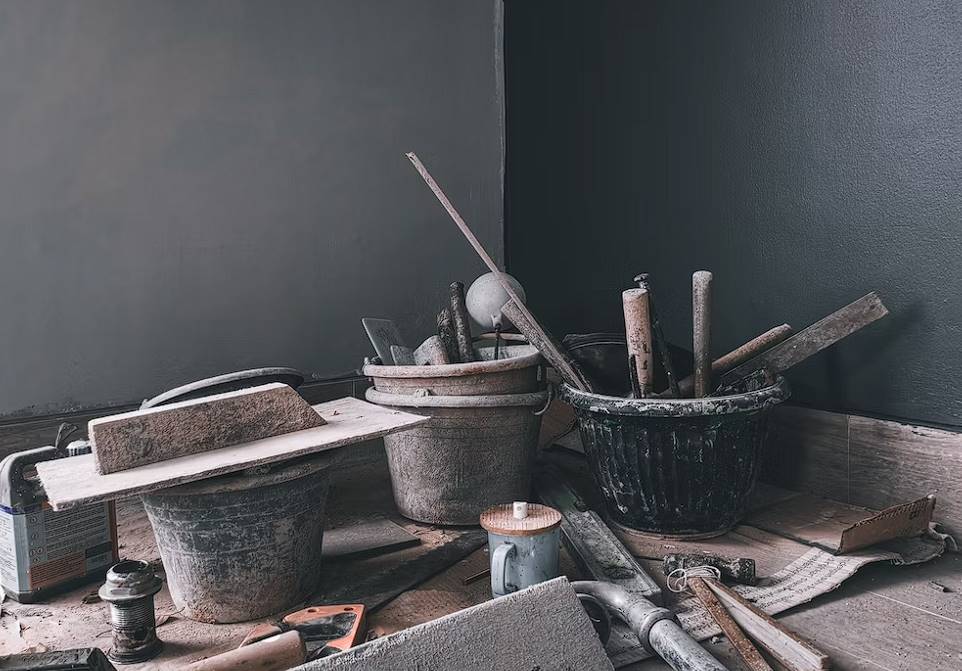Cement plastering is important in the construction industry. It provides structural strength and a smooth finish to walls and surfaces.
Whether you’re a DIY enthusiast or a professional builder, understanding the properties, types, and preparation methods of cement plastering is vital for delivering a durable and aesthetically pleasing result.
This guide will explain the essentials of plastering cement, compare it with other materials, detail different cement types, and outline the best surface preparation and maintenance practices.
Let’s get straight to the point.
Cement plastering is essential in construction, providing strength and a smooth finish to walls. Choosing the right cement—OPC for durability, PPC for moisture resistance, white or coloured cement for aesthetics—impacts quality and longevity.
Proper surface preparation, including cleaning, repairing, priming, and levelling, ensures strong adhesion and prevents cracks. Regular maintenance, such as patching damage and addressing moisture issues, extends durability.
Cement offers superior adhesion, fire resistance, and longevity compared to lime and gypsum plaster. Understanding plastering materials and techniques allows for durable, visually appealing surfaces, making construction and renovation projects more successful and long-lasting.
Types Of Cement Used In Plastering
Selecting the right type of cement for plastering significantly impacts the surface’s quality, durability, and finish. Here’s a detailed look at the different types of cement commonly used in plastering, each offering distinct benefits for specific applications.
1. Ordinary Portland Cement (OPC)
- Versatility: OPC is the most widely used cement for plastering due to its strong bonding properties and suitability for various surfaces.
- Grades: Available in different grades, such as OPC-33, OPC-43, and OPC-53, these products provide flexibility based on strength requirements.
- Applications: Ideal for both interior and exterior plastering due to its fast setting time and excellent adhesion.
- Durability: OPC is known for its long-lasting performance and ability to withstand harsh weather conditions.
2.Portland Pozzolana Cement (PPC)
- Composition: PPC is a blend of OPC clinker and pozzolanic materials like fly ash, volcanic ash, or silica fumes, which enhance its workability.
- Water Resistance: It is especially useful in areas prone to high moisture, as its composition reduces permeability and enhances water resistance.
- Crack Prevention: Using pozzolanic additives reduces shrinkage cracks, making PPC an excellent choice for structures in humid climates.
- Eco-Friendly: Incorporating industrial by-products like fly ash makes PPC an environmentally friendly option.
3. White Cement
- Decorative Use: White cement is primarily used in decorative plastering due to its smooth, bright finish, ideal for high-visibility areas.
- Pigmentation: It can be mixed with pigments to create various colours, providing more flexibility in aesthetic designs.
- Surface Finish: Suitable for polished applications, such as terrazzo flooring or architectural features.
4. Coloured Cement
- Aesthetic Appeal: Coloured cement is similar to white cement but includes various pigments to produce various colours.
- Versatility: It eliminates the need for additional painting, making it a cost-effective choice for artistic and architectural finishes.
- Durability: This type of cement is resistant to fading, ensuring that the vibrant colours remain intact even in exposed conditions.
Additional Considerations When Choosing Cement For Plastering:
- Project Environment: Choose PPC for moisture-prone areas and OPC for dry conditions where quick setting is required.
- Aesthetic Requirements: For decorative features, opt for white or coloured cement to achieve a visually appealing finish.
- Structural Needs: Evaluate your project’s specific structural demands to determine the appropriate grade and type of cement.
Understanding these types of cement and their specific applications can help you make informed choices and ensure that your plastering work is durable and visually appealing.
Surface Preparation For Cement Plastering

Achieving a smooth, durable plaster finish requires thorough surface preparation. Proper preparation ensures better adhesion and reduces the risk of future cracking or peeling.
Steps For Surface Preparation
- Cleaning the Surface: Remove dust, grease, and debris from walls and ceilings. Clean surfaces ensure maximum plaster adhesion.
- Repairing Damage: Fill any cracks, holes, or imperfections with a plaster mix or filler to create a level base.
- Moistening the Surface: Lightly dampen absorbent surfaces like brick or concrete before plastering. Avoid oversaturating to prevent issues with adhesion.
- Applying Primer: A primer helps seal the surface and enhances the bond between the plaster and the substrate.
- Masking Adjacent Surfaces: Protect areas like windows, doors, and electrical outlets with tape or coverings to prevent accidental plaster application.
- Applying a Scratch Coat: For smooth surfaces, apply a scratch coat to provide a textured base that improves plaster grip.
- Levelling the Surface: Use a straightedge to identify and correct uneven areas to ensure a consistent plaster thickness.
- Allowing Drying Time: Let any repairs and primer fully dry before plastering for optimal adhesion.
Maintaining And Repairing Plastered Surfaces
Over time, plastered walls may develop minor cracks or damage due to wear and environmental factors. Regular maintenance can prevent small issues from becoming bigger problems.
Tips For Plaster Maintenance And Repair
- Regular Inspection: Check for any signs of damage, including cracks or discolouration. Early detection allows for timely repairs.
- Patching Small Damages: Fill minor cracks or chips using a suitable patching compound, then smooth the area for a seamless look.
- Addressing Water Damage: Fix the source of any water leaks before repairing the plaster. Ensure the damaged area is completely dry before applying new plaster.
- Reinforcing Large Cracks: To prevent larger cracks from spreading, use mesh reinforcement and a bonding agent.
- Sanding and Smoothing: Lightly sand the repaired area to match the surrounding texture and ensure a smooth finish.
- Repainting or Finishing: Once repairs are complete, repaint or finish the surface to maintain its appearance and protect the plaster.
- Preventive Measures: Use protective pads on furniture and ensure adequate ventilation to prevent moisture build-up and damage.
Plastering Cement Vs. Other Plastering Materials

Plastering is essential in creating even and attractive surfaces in buildings. Cement, lime, and gypsum plaster each have unique properties, making them suitable for different scenarios.
Let’s compare these materials to understand when and where to use each type.
1. Cement Plaster
Advantages:
- Strong Adhesion: Cement plaster bonds effectively to various surfaces, ensuring long-lasting durability.
- Versatility: It is suitable for multiple surfaces, such as concrete, brick, and masonry, making it highly adaptable in construction.
- Fire Resistance: Offers natural fire resistance, enhancing the safety of buildings.
- Durability: This creates a solid protective layer that withstands environmental wear and tear.
Limitations:
- Prone to Cracking: Cement plaster may crack if the water-to-cement ratio is not correctly maintained or curing conditions are poor.
2. Lime Plaster
Advantages:
- Breathable: Allows moisture to move freely through walls, reducing issues like condensation and mould.
- Eco-Friendly: Made from natural materials like sand and water, making it a sustainable choice.
- Flexibility: Can accommodate minor shifts in older or historical buildings, preventing cracks.
Limitations:
- Longer Drying Time: Lime plaster generally takes more time to dry and cure than cement plaster.
- Weaker Adhesion: Although lime plaster sticks well, cement plaster is stronger than its bond.
3. Gypsum Plaster
Advantages:
- Quick Drying: Gypsum plaster dries faster, speeding up the construction process.
- Smooth Finish: Ideal for achieving a flat and polished surface in interior spaces.
- Low Shrinkage: Minimal shrinkage reduces the risk of cracks during drying.
Limitations:
- Limited Water Resistance: Gypsum plaster is unsuitable for damp areas as it deteriorates with moisture exposure.
- Lower Durability: It may not be as robust as cement plaster in high-traffic or high-impact areas.
Choosing The Right Plaster
The appropriate plastering material depends on project requirements, environmental conditions, and desired finish.
Cement plaster is a strong choice for its durability and fire resistance, while lime and gypsum plasters are specifically used in moisture-sensitive and interior applications.
Conclusion
Cement plaster is a versatile and durable material widely used in construction to provide smooth, strong surfaces.
It offers significant benefits over lime and gypsum plasters, including better adhesion, fire resistance, and long-term durability.
The choice between different types of cement—such as OPC, PPC, white cement, and coloured cement—depends on each project’s specific requirements.
Proper surface preparation, involving cleaning, repairing, priming, and levelling, is the key to achieving the best plastering results.
Regular maintenance and timely repairs will ensure that plastered surfaces remain in excellent condition, retaining their visual appeal and structural integrity for years.
With these insights, choosing the right plastering material and techniques can lead to more successful building and renovation projects, enhancing your spaces’ functionality and aesthetics.
Frequently Asked Questions
What is the recommended curing time for plastering cement?
Proper curing typically takes 7 to 14 days, depending on environmental conditions. It’s essential to keep the plaster moist during this period to prevent cracking.
Can plastering cement be used for exterior surfaces?
Yes, plastering cement suits interior and exterior surfaces, providing a protective and decorative layer.
Is it necessary to use a bonding agent before applying plastering cement?
Yes, a bonding agent enhances the adhesion between the existing surface and the plaster, ensuring better results.
How long does plastering cement last before needing repairs?
With proper maintenance, plastering cement can last for many years. However, minor repairs may be required over time due to wear and tear.
Can plastering cement be used on uneven surfaces?
Plastering cement can be applied to uneven surfaces, but the thickness of the plaster may vary to achieve a level finish. Preparing the surface is crucial for a successful application.

